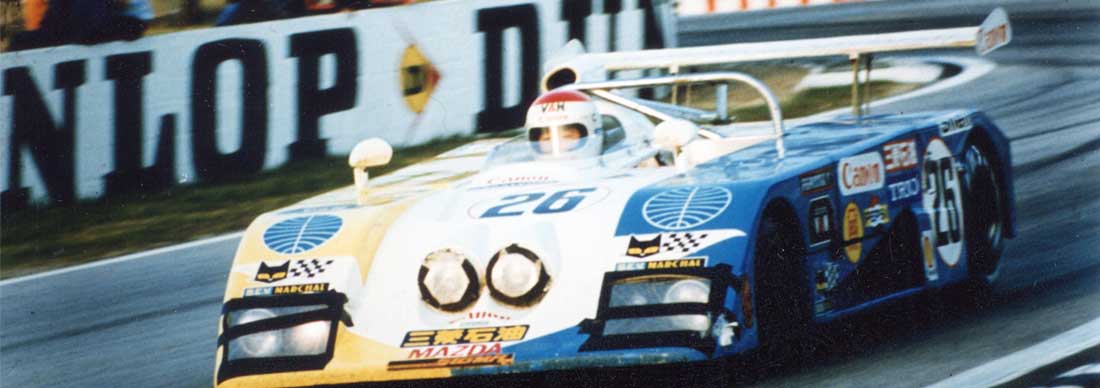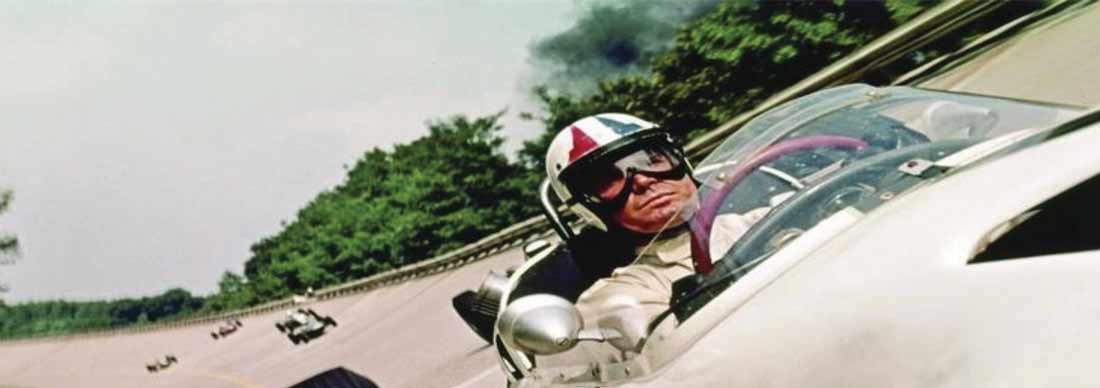
BRP’s Indianapolis Swan Song - Part 3
The two cars had already arrived in the US less the engines. On arrival at Indianapolis airport, they were towed by rope to the team’s garage at the track. Masten Gregory’s team found digs for George Woodward and Jim Chapman in the basement of a private house, about 300 to 400 yards from the track. George had taken a set of drawings with him but the pair had to be registered as official mechanics before they could gain access to ‘Gasoline Alley’. They were then taken to a restaurant where other mechanics were want to ‘hang out’, given a leather bill fold for $100 and told, ‘Don’t say Americans aren’t generous’. In those days, the US car manufacturers would take it in turns to supply not only the pace car but also cars for the teams, and one of those – a Buick - was allotted to the British pair. Woodward had ginger hair then and the previous year’s winner, A J Foyt, quickly started calling him ‘Red’.
Woodward reckons that, ‘You could not expect to meet a more perfect gentleman than George Bryant [the team sponsor]; he was a fantastic guy’. Shortly after they had arrived Bryant asked Woodward and Chapman if he could have a word with them in his car. He was concerned that he had just received a letter from Ken Gregory. ‘I’ve got to sign it saying that I will send a cheque for 10 per cent of any prize money won by the car,’ Bryant told them. Gregory had stated that he would not release any spares for the car until the letter had been signed. Bryant told the pair that he was ‘quite happy not to sign the letter’. Remembers Woodward, ‘He was very upset that someone would think that he might “pull a fast one”. It was the last thing that he would have done.’
The gearboxes had not arrived at first. The piping installations had been carried out at Highgate although these were modified once the cars got to America. Salih took one look at the water system – used by the team for its Formula One cars – and said that it would not work. The British pair pointed out that it had done so on the F1 cars but local Indycar builder George Salih would not be convinced and felt that a bigger tank was required. That meant re-routing the system. ‘It was a lot of unnecessary work,’ states Woodward.

‘One day we came back from the canteen and there were two massive crates in the garage, at least three by four feet,’ he says. ‘They were the gearboxes – and they looked as if they had come out of a commercial vehicle. I was just keeping my fingers crossed that I had got all the measurements right.’ He should not have worried. ‘It all went together, spot on.’
On another return from the mechanics’ canteen (Indianapolis looks after its workers), Woodward found a man in the garage with a tape measure and notebook, sizing up the suspension. ‘We didn’t know who he was. I asked him what he thought he was doing and we were about to physically throw him out of the garage, when he said he was the Monroe representative. I said, “That does not mean you can just come in and start measuring a car”. He said he was just measuring us up for shock absorbers. I pointed out that we had some perfectly good Armstrong dampers on the car. He said, “Everyone at Indy runs Monroes.” I replied, “We’ll be sticking with Armstrongs. They are adjustable and yours aren’t.” Off he went with a flea in his ear.’
Woodward also recalls, ‘We had a “gofer” who was a millionaire. He owned a transport company in California. He kept a crate of Scotch whisky in the boot of his Cadillac and he would open the boot and give Jim and myself a bottle.’ There may have been a culture of no alcohol in the garages but George Salih would regularly have a nip of whisky. ‘He teased us about being tea drinkers as we used to have a brew when the work was finished. By the time we were finished at Indy, I think the Americans in the team were worse than us.’

The cars first turned a wheel the Friday before the first weekend of qualifying. Woodward was concerned that ‘the springs didn’t look quite right. Masten took his car out and it went down the straight like a bloody motorboat. The back was sagging down, which brought the front up and the wind blowing under it lifted it further. Somebody said it would do better on Eagle Creek Reservoir.’ It was obvious that the car needed stronger springs, certainly at the back. The team puzzled over where it could get such things. Then George Bryant stated that he had ‘a pal’ who owned a bedding company that made its own springs. Woodward thought that he was joking. Bryant’s ‘pal’ said he could make some though and Woodward accordingly drew some up, showing the dimensions, the weight required and the number of coils. The springs were manufactured overnight and delivered the next morning. ‘We opened up the box and were aghast. They had made the inside diameter what we had required for the outside diameter!’
The story quickly went round the paddock and before long the Monroe rep walked back in the Bryant garage. He, of course, could supply some suitable springs but, ‘You know what the price will be, don’t you?’ An agreement was made whereby the Armstrong shock absorbers would be run right up to qualifying so that different settings could be tried. Monroe would then take these away and check the valve settings before supplying sets of its own shock absorbers. ‘So, we ended up running Monroes.’
Another problem that Woodward recalls was the fact that it was Ford’s first season with a new engine. Although it already had a racing department, Ford now started another one purely for Indy cars. ‘Neither department had a clue about carburation,’ reckons George, ‘and there was quite a bit of infighting between the pair of them. They kept contradicting each other and, of course, Jim and myself knew nothing about methanol. The high-pressure pumps were fairly crude and we used to call it “bucket injection” as it was just like pouring fuel down a hole. The cars did just one lap to a gallon.’
The team worked hard, including two consecutive ‘all-nighters’. Woodward believes that the operation was drastically understaffed. ‘We could have done with somebody like Pete (Downie) or Bruce (McIntosh) there.’ Chapman’s ankles swelled up and he had to be taken to hospital, where he remained for two days.
‘It all went together in the end for both the cars qualified. So you have to say it was a success,’ says Tony Robinson. However, it was only on the final day that the two BRPs qualified. Masten Gregory was in 31st spot. His teammate, Californian Johnny Boyd, was described by Woodward as, ‘A smashing guy but all he had driven were dirt cars. He didn’t have a clue what a modern suspension car did but he did a good job and qualified 29th.’ (Boyd is said to have told Bryant that he would only drive for him if Howard Gilbert could be his chief mechanic.) Boyd had recorded a four-lap qualifying time of 3mins 52.00secs (155.172mph), Gregory a time of 3mins 53.10secs (154.440mph).

Above: Gregory has qualified at 154.540 mph and all the crew are happy to sign this photograph. (Courtesy Ken Gregory family archive)
The appearance of the two blue and white cars was another step in the British invasion of Indianapolis that had commenced in 1961 with Cooper. Now two more British manufacturers, BRP and Lola were on the Indy grid for the first time. (The latter was to remain at ‘the Brickyard’ for many years, winning the 500 on three occasions and providing as many as 28 cars of the 33 starters on two separate occasions.) The official programme made no mention of the fact that the cars were built by BRP. But then none of the cars on the entry list were identified by their manufacturers, be they Watsons, Halibrands, Gerhards or Vollstedts. In typical US oval racing fashion, the cars were simply known by the names of their sponsors. Hence under the ‘car name’ heading in the programme, we have such as the American Red Ball Special, the Dean Van Lines Special and the STP Oil Treatment Special. The car name for the two BRPs is left blank in the programme, with the entrant given as George R. Bryant Racing Projects. However, by the time that the Starting Positions programme inserts giveaway after final qualifying had been printed, the two BRPs had become George Bryant & Staff Specials.

Above: Masten Gregory poses for the standard Speedway photograph. (Indianapolis Motor Speedway)

Above: The five-speed ZF gearboxes eventually arrived. (Courtesy George Woodward)

Above: BRP was not the only British manufacturer to make its debut at Indianapolis in 1965. Lolas were also pushed out onto the Speedway’s grid for the first time that year. (Lola Cars)
Books by Ian Wagstaff
Other articles by Ian:
BRP’s Indianapolis Swan Song - Part 1
BRP’s Indianapolis Swan Song - Part 2
BRP's Indianapolis Swan Song - Part 4






Leave a comment
This site is protected by hCaptcha and the hCaptcha Privacy Policy and Terms of Service apply.